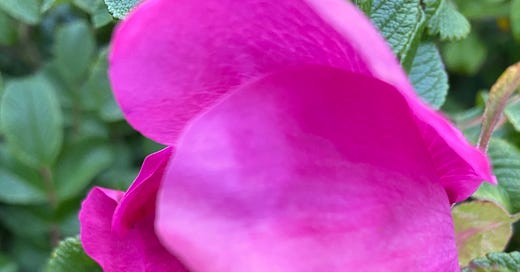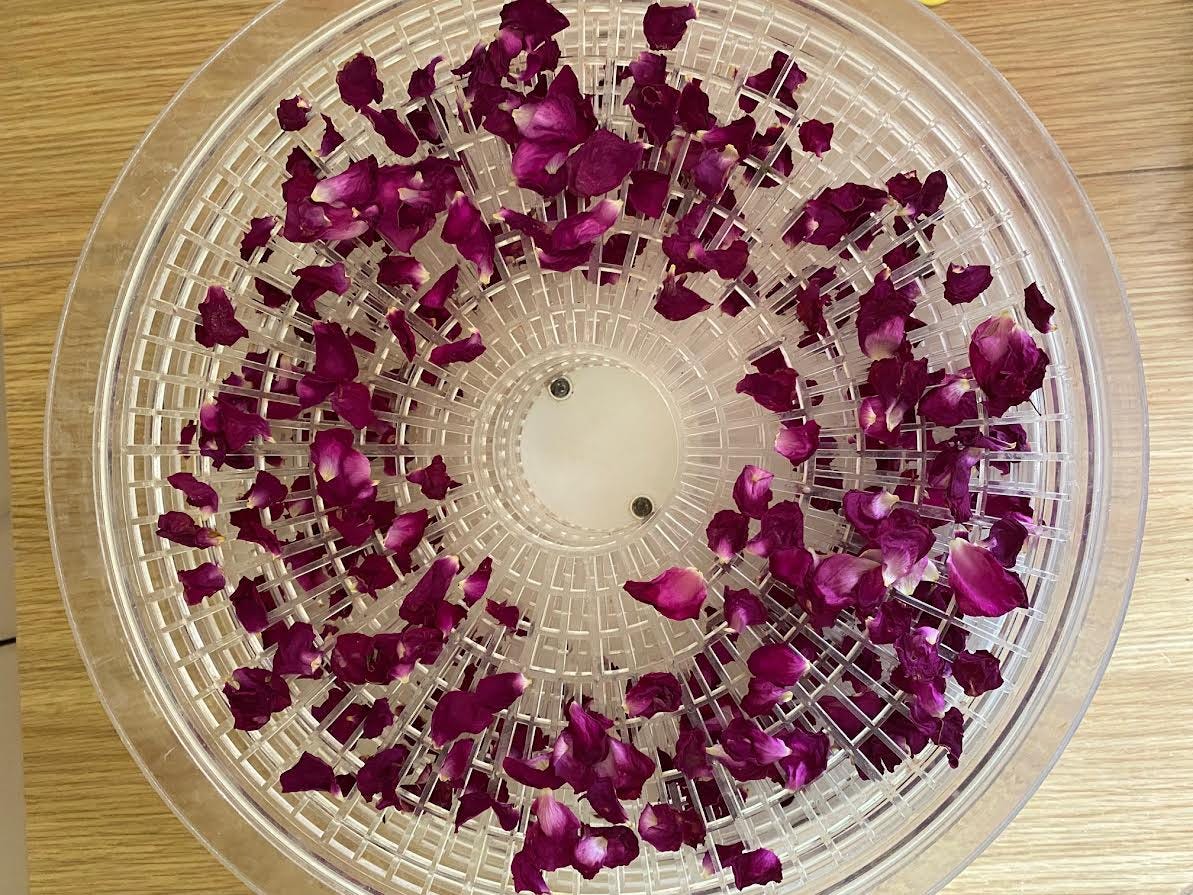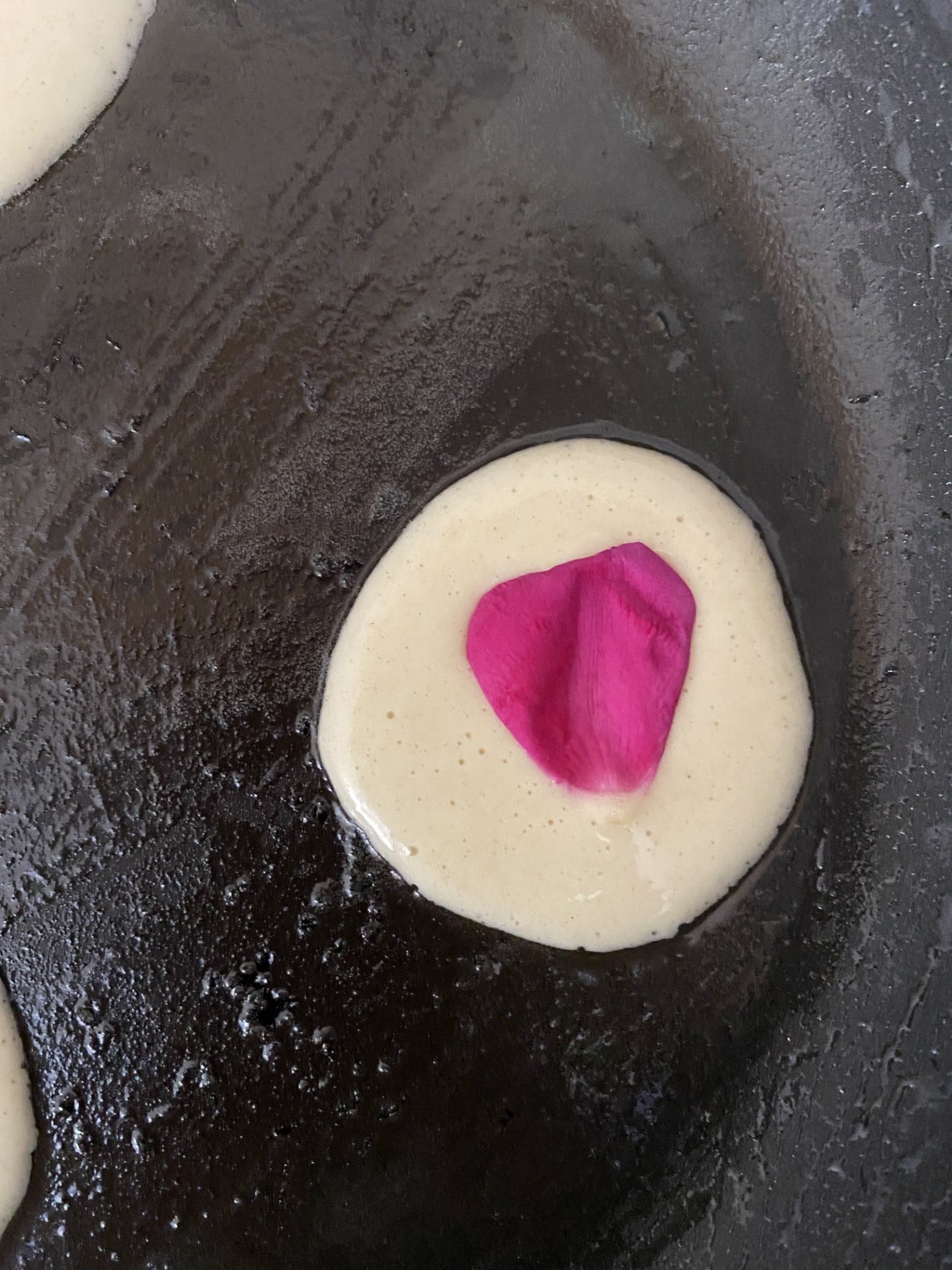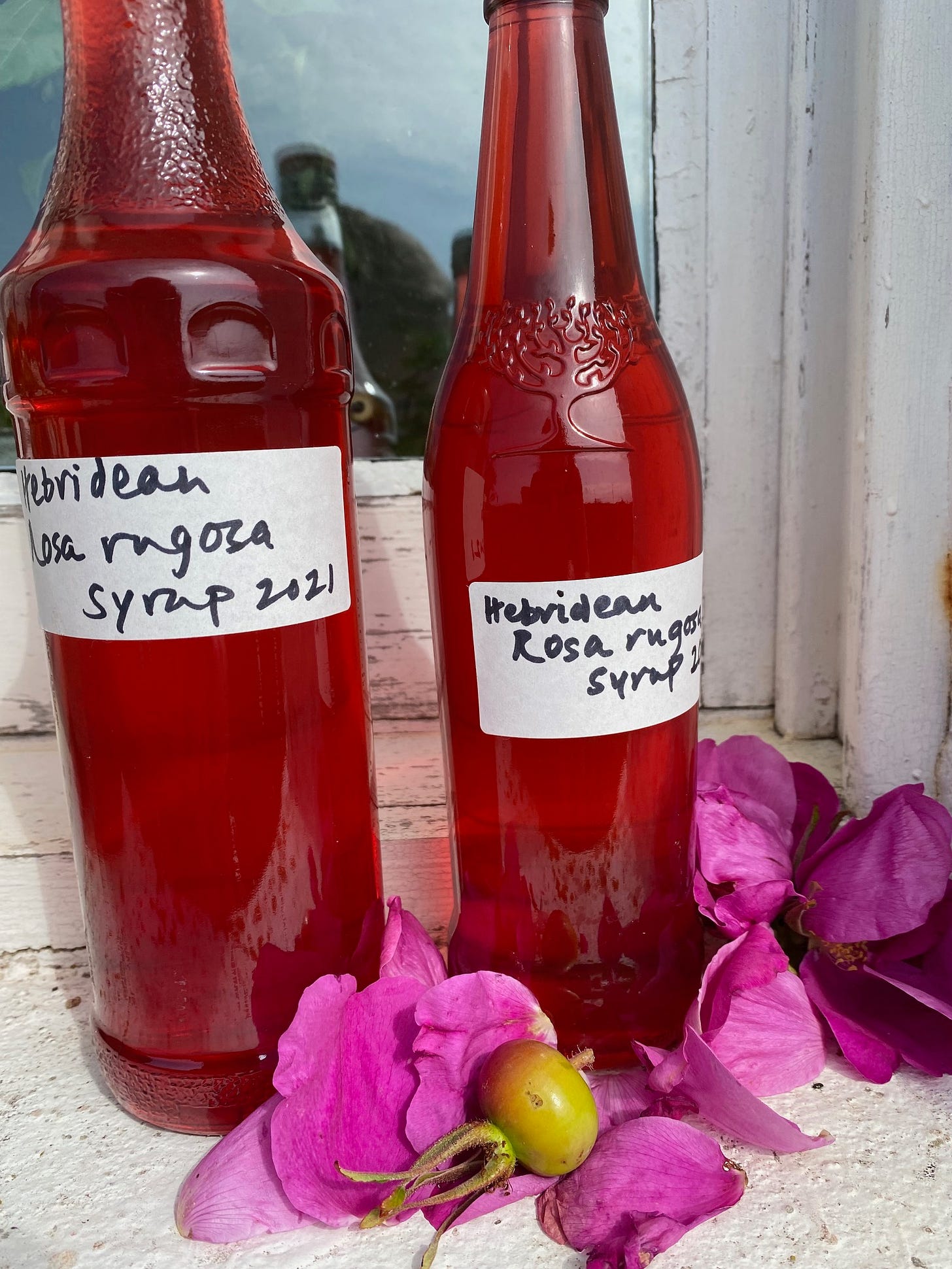The Uist air is redolent with the smell from the early flowerings of the wild Rosa rugosa. There are few hedgerows and trees on this beautiful, but windswept Isle so I have come to appreciate this hardy, deciduous shrub. Native to Eastern Asia, Rosa rugosa is displacing indigenous rose species in European seashore habitats, including Scotland’s Outer Hebrides. However, on the positive side, the shrub is wonderfully scented and a favourite with bumblebees.
Foragers cook seasonally, in tandem with nature; be it a feast or a famine year. Human beings are hard wired to be a tad greedy. Instinctively, we worry about tomorrow. As soon as the word ‘shortage’ is out, the supermarket shelves are bare. I, too, confess that I am often tempted to forage more than I need for my own supper table. Greed. The Old Testament (Deut 24 19-24) offers good social food-justice advice. It encourages us to harvest with a responsible attitude. We read that the poor should be allowed to ‘glean’ or to gather what the harvesters have missed. For the greedy forager, there is a need to consider wild life, too. We must not strip bushes bare. Forage a little here and there and leave some for the birds and bees. One of my favourite Old Testament stories is the Book of Ruth. Ruth provides for her mother in law, Naomi, by gleaning in the fields of a wealthy landowner, Boaz. Yes, Ruth went on to marry Boaz, but gleaning the edges of harvested fields, provided sufficient food for Ruth and her mother in law.
‘For everything there is a season, and a time for every matter under heaven.’ Eccles3 v1
Our food system, where the energy and nutrients flow from one species and eco-layer to the next, is in danger of collapsing. Species are becoming extinct. Our dominance and behaviour has made their survival ever more difficult. The larger Spanish bluebell is cross breeding with the indigenous English varient and the delicately petaled dog rose (Rosa canina) is being replaced by the hardy Rosa rugosa. The ‘Invasivores’ is a Foraging movement that promotes eating invasive species. It won’t eradicate the invaders but it could redress the balance. I cook with the seaweed, Japanese wireweed Sargassum muticum. This fecund species has now invaded the Outer Hebrides. In 2015, when I wrote the first edition of Seaweed in the Kitchen I had to purcahse this seaweed, dried, for my recipe testing. It was previously unavailable on a beach near me. Climate change, pollution and a demand for increased harvests have changed the food that is available to eat - and we anticipate that it is eaten ‘fast’ too. “Let’s grab a bite to eat” – smacks of : food that is potentially low in nutrients, eaten hastily with little consideration of conviviality or the art of hospitality. Meals have most meaning when, with time and openness, they are shared, even becoming a spiritual exercise. Kitchen mindfulness, if you will.
The words of Wendell Berry in The Unsettling of America: Culture and Agriculture resonate:
The willingness to abuse other bodies is the willingness to abuse one’s own. To damage the earth is to damage your children. To despise the ground is to despise its fruit: to despise the fruit is to despise its eaters. The wholeness of health is broken by despise. We no longer seem to be able to live in a ways that is in sympathy with nature.
Let me encourage you to appreciate the seasonal beauty and taste of Rosa rugosa This rose is the lazy forager’s star. The bushes are relatively easy to forage because in comparison with the UK’s native wild roses, it has sturdier and bigger petals and hips. (A breath of wind and the petals of Rosa canina will blow away.) The heady scent from the rugosa’s candy-floss pink flowers is intoxicating. You’ll find Rosa rugosa in overgrown hedgerows, sand dunes, on sea cliffs, roadsides, and on waste ground. In June, gather the petals; shaking well to allow any insects to ‘relocate’. Don’t be greedy.
In Autumn, return to harvest hips, which you can use in: syrup, jelly, jam, and chutney (with crab apples works well) and tea. A spiced rose-hip syrup is not only rich in vitamin C, it doubles up as a non-alcoholic treat for drivers at Christmas time.
Add Rosa rugosa petals to pancakes to create sweet, heart-shaped decoration. There are other ideas in The Forager’s Kitchen Handbook : use them to flavour Turkish delight, homemade marshmallows, apricot jam, ice-cream, sorbets and fruit curds. Or simply steep the petals in water and then boil with sugar to make a “hectic pink Rosa rugosa syrup,” which is excellent spooned over ice cream.
20 Rosa rugosa petals, insect-free (shaken) but unwashed
100g self-raising flour
1 teaspoon baking powder
25g caster sugar
1 medium egg
c125ml milk
Butter for greasing
1. Sift the flour and baking powder into a mixing bowl and add the sugar. Make a well in the centre and pop in the egg. Using a small whisk, slowly add the milk to the egg, gradually drawing in the flour and sugar. Beat the batter well, until it is smooth and free of lumps.
2. In a frying pan, heat a knob of butter (do not allow it to brown) Drop a scant tablespoonful of batter into the pan (it may be easier to put the batter into a measuring jug and slowly pour the batter into the frying pan).
3. When the pancake puffs up and starts to bubble, arrange a petal on the top. Then flip the pancake over with a spatula. Cook for another minute, until the pancake puffs up and the underside is golden. Repeat until you have used all the batter, adding additional butter as necessary. Wrap the pancakes in a clean dish towel to keep them warm.









Alas .. I have an overgrown Rosa rugosa bush in my garden that has just lost all its blooms .. probably the heat .. I will remember your suggestions however.. the smell is beautiful x
“Then said the Lord unto Moses, Behold, I will rain bread from heaven for you; and the people shall go out and gather a certain rate every day” (Exodus 16:4)
A very good message to remember. We will be provided, but we should not take more than we need.
I love the colour of the Rosa. So vibrant for something so hardy.